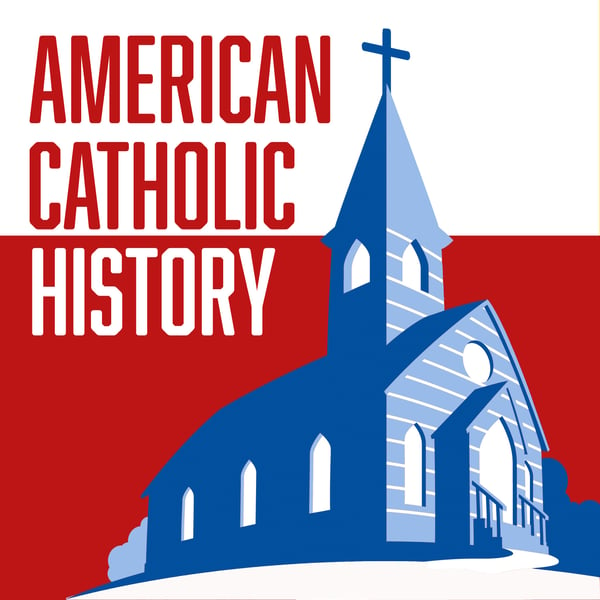The Immaculate Conception: Patroness of the United States of America
American Catholic History
Noelle & Tom Crowe
5 • 724 Ratings
🗓️ 4 December 2024
⏱️ 18 minutes
🧾️ Download transcript
Summary
Transcript
Click on a timestamp to play from that location
| 0:00.0 | Hello and welcome to American Catholic History, brought to you by the support of listeners like you. |
| 0:11.0 | If you like this podcast and would like to support our work, please visit Americancatholic |
| 0:16.2 | history.org slash support. I'm Noelle Heistere. And I'm Tom Crow. |
| 0:21.7 | Today we're talking about our blessed mother and how in 1846 she was named patroness of the |
| 0:29.2 | United States under the title of Immaculate Conception. |
| 0:33.2 | In a day and age when the life of the child in the womb from the moment of conception is a source of |
| 0:38.3 | contention, this patronage really means so much. Yeah, you're not kidding. Not only because of |
| 0:43.6 | the example it gives, but the value of the child in the womb, but also because of the special |
| 0:48.5 | graces that flow from our lady as patroness, and we need them. Yeah, we do. Now, we should clarify a few things here to make sure our listeners understand what we're |
| 0:58.8 | talking about. |
| 1:00.2 | First, what the Immaculate Conception is and what it is not. |
| 1:04.8 | The Immaculate Conception is the belief that Mary, from the moment of her conception, |
| 1:10.0 | was preserved from original sin. Right. This is not the teaching that Mary, from the moment of her conception, was preserved from original sin. |
| 1:12.6 | Right. This is not the teaching that Christ was conceived in Mary's womb without a human |
| 1:16.6 | father. That's what happened at the Annunciation. The Immaculate Conception has to do with |
| 1:22.0 | Mary's conception in the womb of her mother, Anne. And Anne's husband, Jokham, was Mary's father through natural means. |
| 1:29.4 | But through a special grace of God, Mary was preserved from the stain of original sin. |
| 1:34.9 | One additional point on this. It does not mean that Mary did not need a savior. |
| 1:39.7 | Mary did not avoid original sin through her own merits. Rather, Mary was preserved from original sin |
| 1:46.0 | by a special grace of God, saving her in light of the sacrifice that Jesus would make on the |
| 1:51.8 | cross. Yeah, this sort of thing, applying effects of an action before the action is completed |
| 1:56.1 | is, of course, impossible for humans. We are subject to time and things being kind of linear in time. |
... |
Please login to see the full transcript.
Disclaimer: The podcast and artwork embedded on this page are from Noelle & Tom Crowe, and are the property of its owner and not affiliated with or endorsed by Tapesearch.
Generated transcripts are the property of Noelle & Tom Crowe and are distributed freely under the Fair Use doctrine. Transcripts generated by Tapesearch are not guaranteed to be accurate.
Copyright © Tapesearch 2025.

